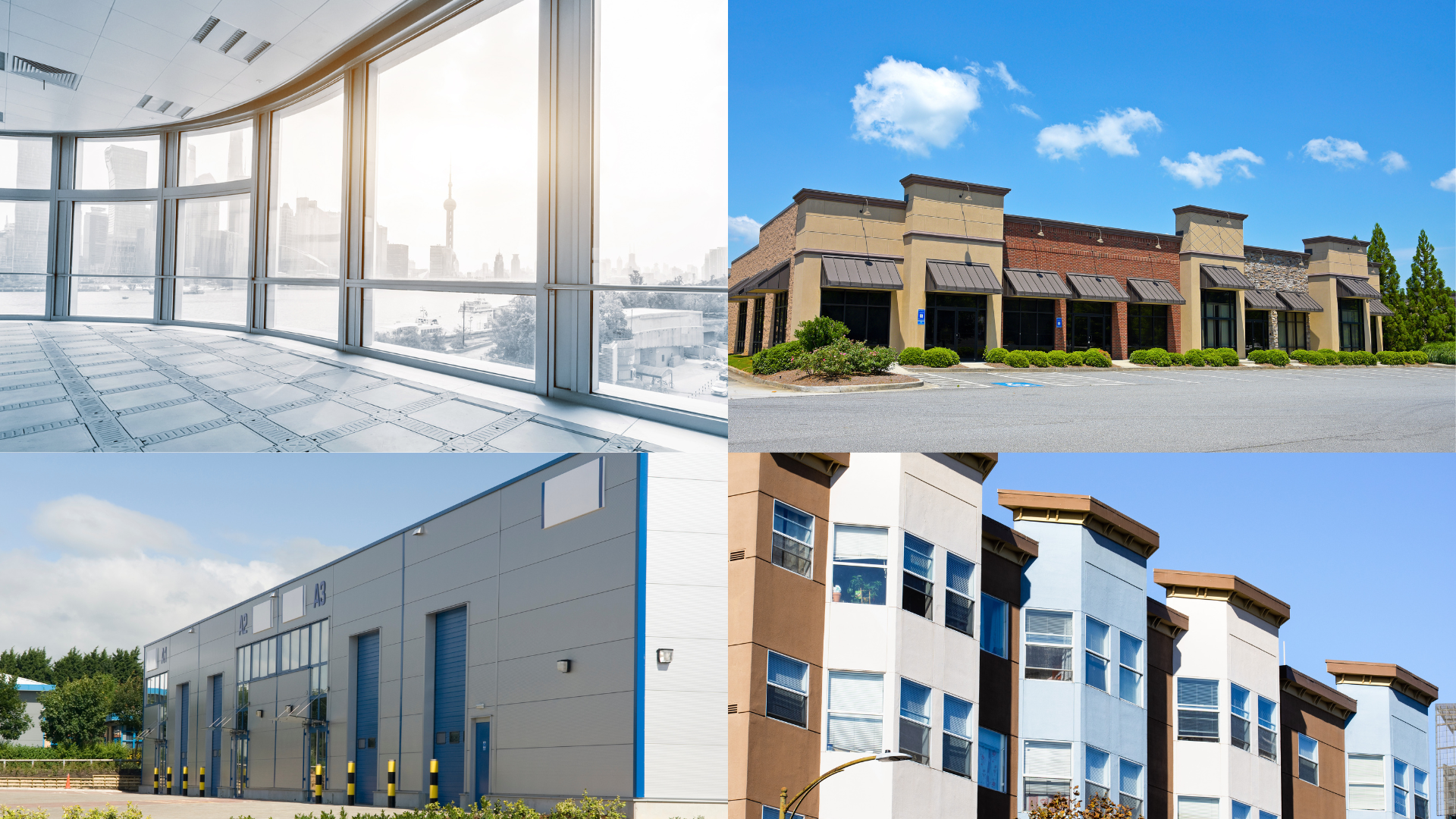January 31, 2025

Gross Leasable Area
When it comes to commercial real estate, Gross Leasable Area (GLA) is a term that investors, developers, and tenants encounter frequently. Understanding GLA helps with evaluating property value, setting lease terms, and forecasting investment returns. At
CIP Texas, we specialize in helping clients navigate these details, ensuring their investments align with their goals.
What is Gross Leasable Area (GLA)?
Gross Leasable Area refers to the total floor space within a commercial property that is designated for
tenant occupancy and exclusive use. This metric plays an important role in
leasing agreements, rental rates, property valuation, and space optimization. GLA encompasses all usable spaces rented by tenants but excludes common or shared areas that serve multiple occupants.
For example:
- Retail Properties: GLA typically encompasses the store's sales floor, stockrooms, and private offices.
- Office Buildings: It includes the tenant’s office suites and any associated storage or private meeting spaces.
- Industrial Spaces: Consists of manufacturing areas, distribution zones, loading docks (if leased exclusively), and administrative offices within the facility.
- Shopping Centers: For multi-tenant retail properties like strip malls and shopping centers, GLA includes the leased storefronts and any designated backroom or storage space within the unit.
What GLA Does NOT Include:
- Common hallways and lobbies
- Shared restrooms and stairwells
- Mechanical and utility rooms
- Elevator shafts and emergency exits
Gross Area vs Net Area
Understanding the differences between gross area and net area is important when evaluating a commercial property.
Gross Area:
This refers to the total square footage of a building, including all enclosed spaces such as walls, common areas, mechanical rooms, and service areas. It is often used for calculating construction costs and property assessments.
Net Area:
This is the portion of the building that is actually usable by tenants, excluding structural elements, corridors, and common facilities. Net area is typically smaller than the gross area, and it provides a clearer picture of the functional space available for occupancy.
For leasing and investment decisions,
GLA sits between gross area and net area, as it represents all rentable space while excluding non-usable areas. This distinction helps landlords and tenants understand what portion of the property is generating income versus what is dedicated to building functionality.
Why is GLA Important?
GLA plays a role in several aspects of commercial real estate, including:
List of Services
-
1. Determining RentList Item 1
Lease agreements often base rental rates on GLA. For instance, a property owner may charge $25 per square foot of GLA annually. Knowing the GLA helps tenants and landlords negotiate fair lease terms and assess the financial feasibility of a property.
-
2. Property ValuationList Item 2
Investors use GLA in real estate to calculate a property’s potential revenue. By multiplying GLA by the average rental rate, stakeholders can estimate the property’s gross income and its value.
-
3. Space PlanningList Item 3
For tenants, understanding GLA ensures they’re paying for the exact amount of usable space. It also helps them determine if a property meets their operational needs, whether they require extensive storage areas, expansive sales floors, or private office suites.
-
4. Marketing and Investment DecisionsList Item 4
Developers and brokers use GLA to market properties effectively, highlighting the amount of space available to prospective tenants. Additionally, investors evaluate GLA to compare properties and identify the best opportunities.
GLA vs. Other Measurements
GLA is often confused with other measurements like Gross Floor Area (GFA) and Net Leasable Area (NLA). Here’s how they differ:
- Gross Floor Area (GFA): Includes all enclosed areas within a building, including shared spaces and mechanical rooms.
- Net Leasable Area (NLA): Similar to GLA but can vary depending on regional definitions and lease agreements.
For investors in Texas, where commercial properties range from sprawling retail centers to mixed-use developments, understanding these distinctions ensures accurate financial planning.
Calculating Gross Leasable Area
Gross Leasable Area is determined by measuring the total usable floor space within a commercial property that a tenant occupies and controls. This includes all areas exclusively leased to the tenant but excludes shared common areas.
Step-by-Step Calculation of GLA:
- Measure the Tenant’s Space
- Start by measuring the internal dimensions of the tenant’s leased space (length × width).
- Include all usable spaces such as retail/showroom areas, office spaces, storage rooms, and private restrooms (if exclusive to the tenant).
- Exclude walls shared with common areas, hallways, and other tenants.
- Exclude Common Areas
- Do NOT include lobbies, shared hallways, stairwells, elevators, mechanical rooms, or restrooms used by multiple tenants.
- Only include spaces under the tenant’s exclusive control.
- Sum Up the Individual Spaces
- If a tenant leases multiple floors or sections within a property, add up the square footage of all leased spaces.
Formula for GLA:
GLA=∑(Length×Width) of all tenant-controlled spaces
Example Calculation:
A retail store in a shopping center leases:
- Sales floor: 2,000 sq. ft.
- Stockroom: 500 sq. ft.
- Private office: 200 sq. ft.
GLA = 2,000 + 500 + 200 = 2,700 sq. ft.
However, the common hallway outside the store leading to public restrooms is not included in the GLA.
By accurately calculating GLA, landlords and tenants can determine rental costs, space efficiency, and lease agreements with clarity.
GLA in Different Property Types

Retail Properties
In retail settings, such as shopping malls and strip centers, GLA directly impacts tenant placement and foot traffic. Anchor tenants like grocery stores often lease larger spaces, while smaller retailers occupy less GLA but benefit from shared customer flow.
Office Buildings
For office properties, GLA affects how tenants utilize the space. Businesses with open-plan offices may need more GLA to accommodate desks, meeting rooms, and collaboration zones.
Industrial and Warehouse Spaces
GLA in industrial properties includes storage, production, and distribution areas. Tenants prioritize ceiling height and accessibility in addition to floor area.
Maximizing GLA Value for Landlords and Tenants
For Landlords:
- Optimize Space: Design properties to maximize usable space while minimizing wasted areas.
- Competitive Pricing: Research market rates to price your property’s GLA competitively.
- Flexible Layouts: Offer customizable spaces to attract a diverse range of tenants.
For Tenants:
- Assess Needs: Determine how much GLA your business requires to operate efficiently.
- Review Lease Terms: Understand what’s included in the GLA calculation to avoid unexpected costs.
- Plan for Growth: Choose properties with the flexibility to expand as your business grows.
Partner with CIP Texas
Whether you’re an investor seeking high-performing properties or a business owner looking for the perfect space, understanding Gross Leasable Area is essential. At CIP Texas, we’re committed to providing expert insights and personalized solutions to help you succeed in the Texas real estate market.
Contact us today to learn more about how we can assist with your commercial property needs. Visit our website at
www.ciptexas.com or call us at
512-682-1000. Let’s build your success, square foot by square foot.



